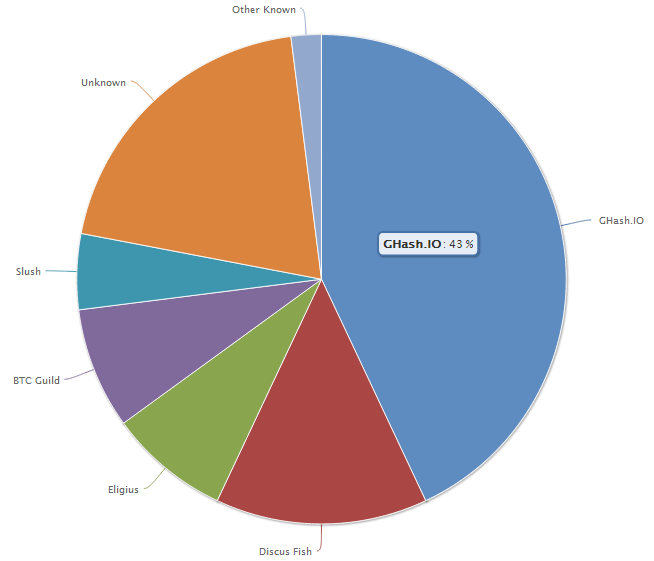Bitcoin miners have been urged to get out of the Ghash.io mining pool after once again coming close to generating 51% of the hashing power.
The pool held as much as 47% several hours ago, triggering multiple warnings within the Bitcoin community. Their portion since declined back to 40%, a level not warranting immediate action but worth keeping an eye on.

Hash Rate distribution showing Ghash.io reaching 43%, 24 hours ago, on its way up to 47%. Source: Blockchain.info
The pool has periodically come close to the 51% mark over the preceding months, but no tangible harm has been observed.
The pool is popular for offering mining with no fees, multiple coins, an easy setup process, multiple configuration options and other advanced features. They also run the cex.io site where mining contracts can be traded and which, until April, also offered no fees. They advertise having 180,000 users.
Just over two weeks ago, Litecoin had its own scare when the Coinotron mining pool actually hit the 51% mark before quickly receding. No harm was observed.
Once a miner controls a majority of the hashing power, it can make decisions reflecting the "consensus" of the network, allowing it to double spend its own transactions or deny others from transacting. While it has been argued that the benefits enjoyed by the attackers are marginal, this doesn't rule out the harm they can cause with malicious intent.
Debate has broken out as to how effective warnings such as today's really are. Many argue that the noble ideal of protecting Bitcoin's integrity is of no significance, especially if the threat is posed by rogue entities looking to hijack or destroy Bitcoin. According to them, the best safeguard is introducing some incentivization preventing such situations through competitive means. Others point out that Ghash.io and others have apparently pulled back from such levels on their own in the past, and should be deemed trustworthy.
















